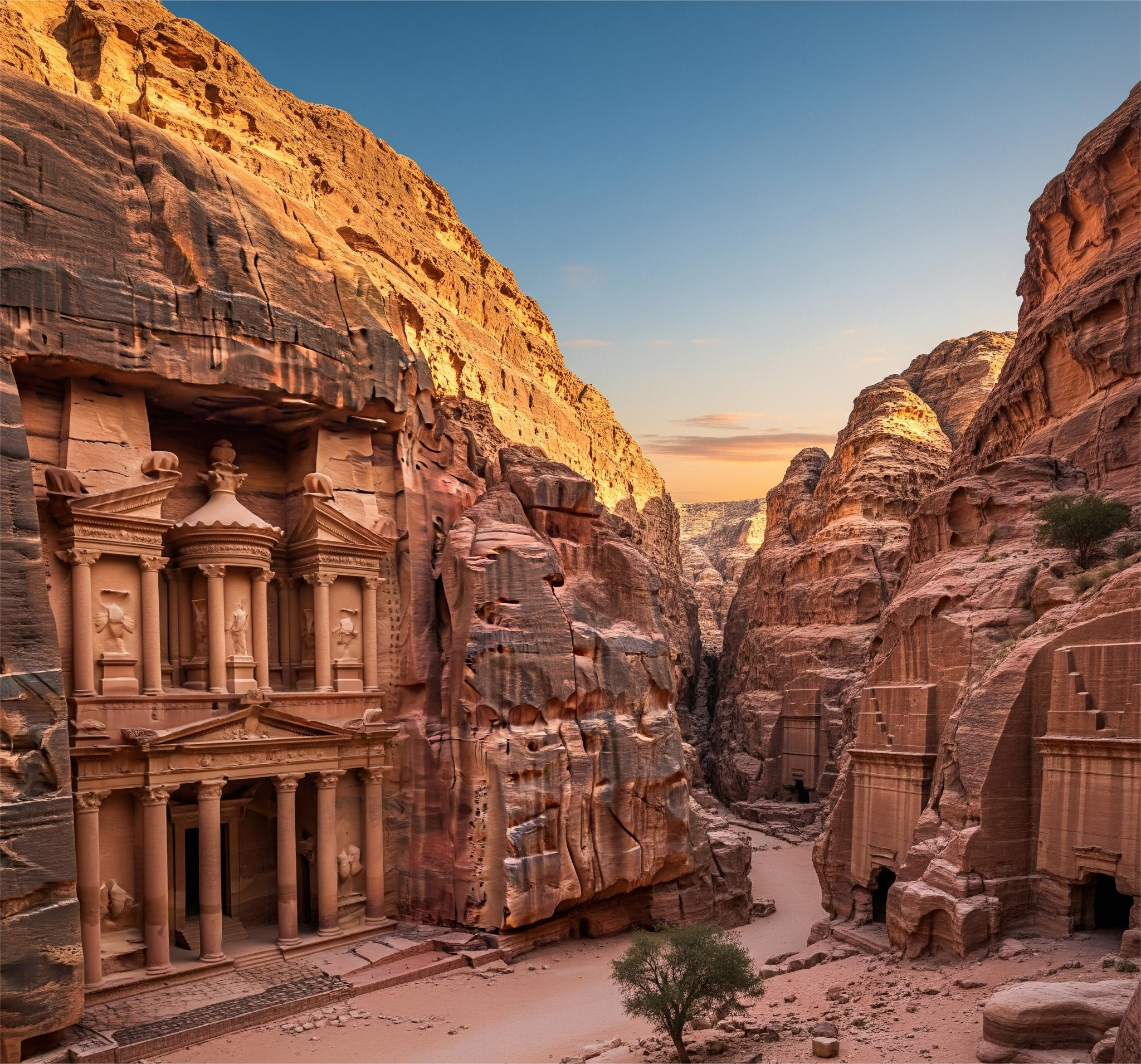Carved into the ruddy sandstone cliffs of southern Jordan, Petra stands as a breathtaking monument to human ingenuity and cultural exchange. Known as the “Rose City” due to the warm hues of its rock-cut façades, Petra was once the thriving capital of the Nabataean Kingdom, a vital center of commerce, art, and innovation in the ancient world. Its rediscovery in the 19th century stunned Western explorers and scholars alike, sparking global fascination with its architectural grandeur and mysterious past.
Origins and Rise: The Nabataean Capital
The Nabataeans were a Semitic Arab people who settled in the arid region of modern-day Jordan around the 4th century BCE. Originally nomadic, they rose to power through control of trade routes, linking Arabia, Egypt, and the Mediterranean world. Petra emerged as their capital by the late 4th or early 3rd century BCE, flourishing due to its strategic position at the crossroads of incense, spice, and silk caravans.
The city’s growth was rooted not only in its commercial importance but in the Nabataeans’ remarkable ability to manage the harsh desert environment. They engineered an advanced system of cisterns, aqueducts, and dams to control flash floods and store precious water—making life in Petra sustainable even during dry seasons.
Architectural Marvels: A Fusion of Cultures
Petra’s architecture is one of its most astonishing features—a blend of Hellenistic, Roman, Egyptian, and indigenous Nabataean styles. The city’s most iconic structures are carved directly into the cliffs, showcasing an extraordinary level of craftsmanship.
Some key highlights include:
Al-Khazneh (The Treasury): Perhaps Petra’s most famous monument, this towering, intricately carved façade was likely a royal tomb, though its exact purpose remains debated. Influenced by Greco-Roman architecture, it features Corinthian columns, friezes, and a central tholos (dome).
The Monastery (Ad Deir): Similar in style to the Treasury but even larger, the Monastery is reached via a challenging climb and offers panoramic views of the surrounding desert.
The Siq: A narrow, winding gorge that serves as Petra’s dramatic entrance, the Siq is lined with carvings and leads visitors directly to the Treasury, creating a theatrical effect.
The Great Temple, Royal Tombs, and Street of Facades: These structures showcase the city’s urban layout, religious life, and social stratification.
Petra is not only a display of technical skill, but also a reflection of the Nabataeans’ cosmopolitan worldview, incorporating diverse influences from the civilizations they traded with.
Decline and Rediscovery
Petra’s prosperity waned after the Roman annexation of the Nabataean Kingdom in 106 CE, although the city remained inhabited for several centuries. Over time, changes in trade routes and multiple earthquakes contributed to its decline. By the 7th century, Petra was largely abandoned, surviving only in local folklore.
For centuries, the site remained unknown to the Western world, hidden by Bedouin tribes. In 1812, Swiss explorer Johann Ludwig Burckhardt disguised himself as a Muslim pilgrim and convinced local guides to take him to the fabled ruins. His published accounts ignited European interest in Petra, which soon became a focus for archaeological exploration and romantic imagination.
Modern Significance: A UNESCO Wonder
In 1985, Petra was designated a UNESCO World Heritage Site, recognized as “one of the most precious cultural properties of man's cultural heritage.” In 2007, it was named one of the New Seven Wonders of the World, further cementing its global status.
Today, Petra draws hundreds of thousands of visitors annually. Ongoing excavations continue to unearth new insights into the city’s urban planning, religious practices, and socio-political dynamics. Its preservation remains a priority amid threats from tourism, weathering, and erosion.







